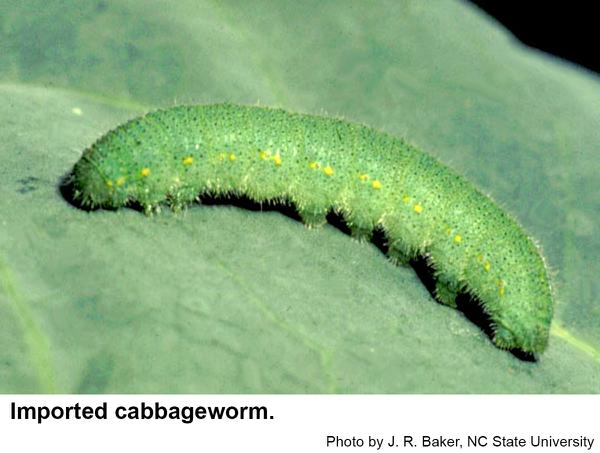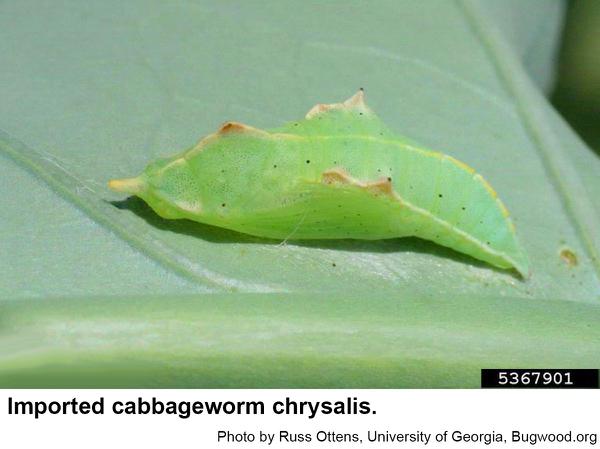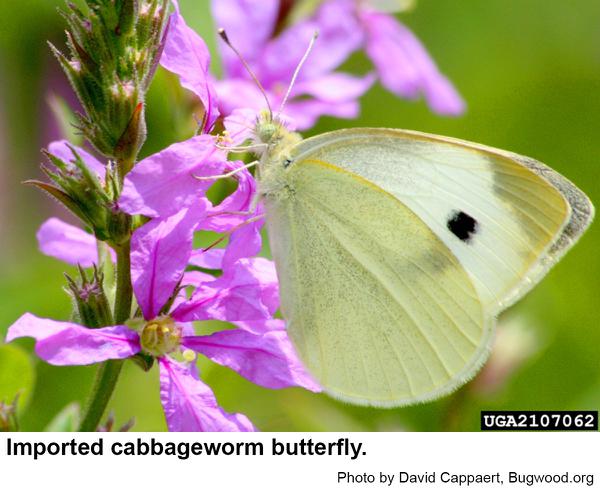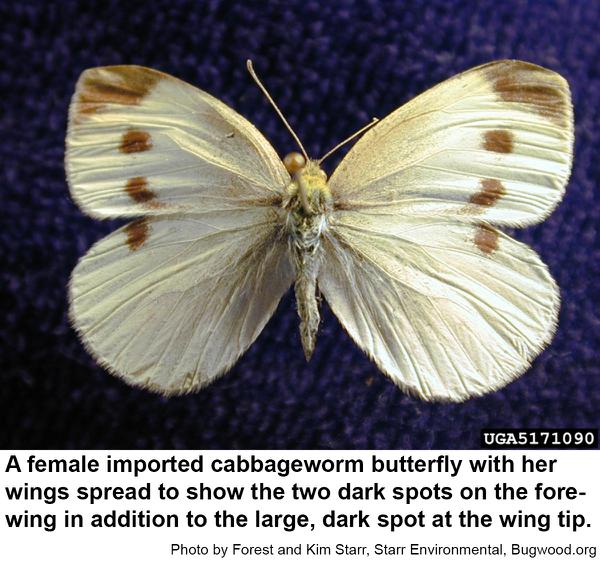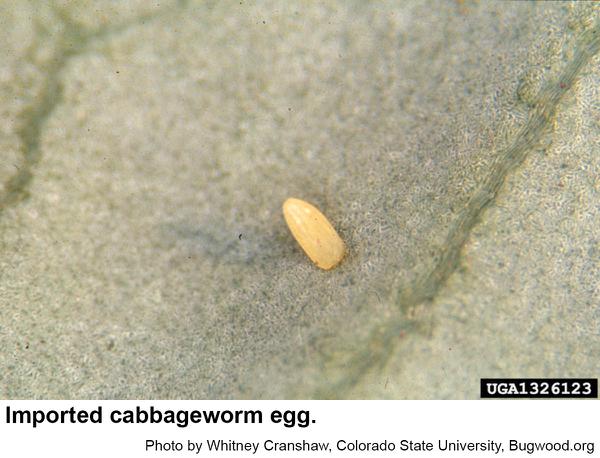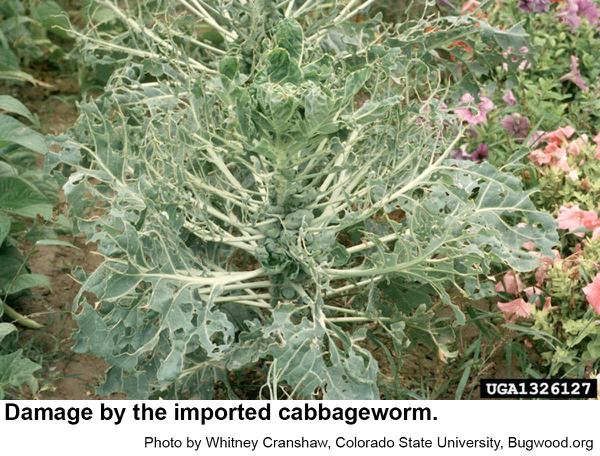Description and Biology
The imported cabbageworm, Pieris rapae, is the immature stage of a white butterfly that has a black area near the tip of each forewing and a small black spot on the front edge of each hind wing. Female butterflies have two black spots on each forewing; males have only one. Females have a wingspan of about 2 inches; males are slightly smaller. Adults emerge early in spring, as early as March. Females attach very small, pale yellow, bullet-shaped eggs upright on a leaf surface. About a week later, tiny velvety green caterpillars hatch. Older caterpillars have a faint yellow stripe down the back and a row of faint yellow spots on each side. The caterpillars grow to just over an inch long in about two weeks. They then molt into a gray, green, or brown, sharply-angled chrysalis (pupa) about 7/8 inch long. Chrysalidaes are attached to the lower leaf surface by a silken loop. Imported cabbageworm butterflies usually molt from chrysalidaes in a week or two although they do overwinter as pupae attached to host plant debris. We have three or four generations per year.
Host Plants
Imported cabbageworms feed on Allyssum, sweet alyssum (Lobularia maritima), nasturtium, stock (Matthiola), flowering kale, ornamental cabbage, and weeds in the mustard family as well as vegetable crops in that family. Imported cabbageworms are commonly found on the undersides of leaves. Young caterpillars feed superficially, leaving the upper surface intact. Larger imported cabbageworms chew holes and even bore into the center of the heads of edible cultivars leaving masses of wet, greenish-brown excrement.
Residential Recommendations
Although imported cabbageworms are attacked by a number of disease organisms and parasites, insecticides may have to be used to protect flowering crucifers. Most of the insecticides labeled for landscape use in home grounds should give adequate control.
References
- Common name: imported cabbageworm, scientific name: Pieris rapae (Linnaeus) (Insecta: Lepidoptera: Pieridae). Capinera, J. L. 2013 (revised). Featured Creatures. Entomology & Nematology, FDACS/DPI, EDIS, Publication Number: EENY-126.
- Insect and Related Pests of Vegetables. Sorensen, K. A. and J. R. Baker, editors. 1994. NC State Extension Publications AG-295.
- Extension Plant Pathology Publications and Factsheets
- Horticultural Science Publications
- North Carolina Agricultural Chemicals Manual
For assistance with a specific problem, contact your local N.C. Cooperative Extension Center.
This Factsheet has not been peer reviewed.
Publication date: March 4, 2017
Reviewed/Revised: Dec. 9, 2021
Recommendations for the use of agricultural chemicals are included in this publication as a convenience to the reader. The use of brand names and any mention or listing of commercial products or services in this publication does not imply endorsement by NC State University or N.C. A&T State University nor discrimination against similar products or services not mentioned. Individuals who use agricultural chemicals are responsible for ensuring that the intended use complies with current regulations and conforms to the product label. Be sure to obtain current information about usage regulations and examine a current product label before applying any chemical. For assistance, contact your local N.C. Cooperative Extension county center.
N.C. Cooperative Extension prohibits discrimination and harassment regardless of age, color, disability, family and marital status, gender identity, national origin, political beliefs, race, religion, sex (including pregnancy), sexual orientation and veteran status.

